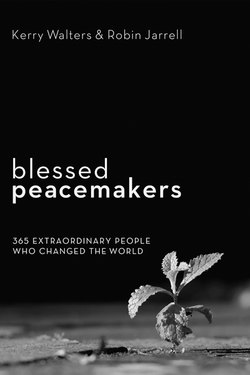Читать книгу Blessed Peacemakers - Robin Jarrell - Страница 27
На сайте Литреса книга снята с продажи.
23 January María Julia Hernández
Оглавление30 January 1939—30 March 2007
Remembering the Slain
In the feature film Romero about the life and martyrdom of El Salvadoran Archbishop Óscar Romero, there’s a poignant scene in which the relatives of “disappeared” victims of death squads line up to look at hundreds of photographs of corpses to see if their missing loved ones are among them. They dread finding them—but they need to know what happened to them. And if they discover that their loved ones are among the slain, they want justice.
The scene isn’t a cinematic invention. María Julia Hernández actually compiled a photographic encyclopedia of the victims of the civil war in El Salvador that claimed some seventy-five thousand lives between 1978 and 1992. Death squads and military units loyal to the ruling junta kidnapped, tortured, raped, and killed thousands of ordinary people whom they suspected of loyalty to the leftist guerrillas defying the government. For their part, the guerrillas also carried out kidnappings and killings of people whom they thought loyal to the government. Every morning maimed corpses could be found on the streets of San Salvador, dumped overnight by right-wing death squads or leftist guerillas. Often their faces were burned with battery acid to delay identification of them.
After he became archbishop in 1977, Óscar Romero asked Hernández, then a law professor at the University of Central America, to help him document the atrocities. Romero was murdered three years later, and Hernández herself received regular death threats during the next decade; she began each day by praying, “Well, God, will I see you today, or will you leave me a bit longer, fighting?” But she persevered in her advocacy for the disappeared and the slain, eventually putting together a catalogue of the dead that contained several thousand photos. She was the first to break the news about the 1981 El Mozote Massacre in which nearly eight hundred peasant men, women, and children were abused and slaughtered by government forces. Eight years later, she was one of the lead investigators of the murder of six Jesuit priests at the university where she once taught. As the Human Rights Officer for the Roman Catholic Diocese of San Salvador, she pestered the government to investigate these and other murders and to prosecute those responsible. When the civil war ended in 1991, Hernández hoped that justice would finally be served. But the government issued a general amnesty for all participants in the long conflict. Hernández, undeterred, campaigned to overturn the amnesty.
Her dedication to chronicling human rights abuses in El Salvador and seeking justice for victims was unshakable. An intensely religious woman, Hernández never married, lived simply, and worked out of a sparse office decorated with a photograph of Romero, a man whom she loved and admired. She once described her vocation as a “mission to help the Salvadorian people, who live in a defenseless and precarious state. I know that, from a religious point of view, defending human rights is also a labor of evangelism because it is the defense of human dignity, of men and women in the image of God. It is a choice of love, a choice of faith. I shall never give up.”
